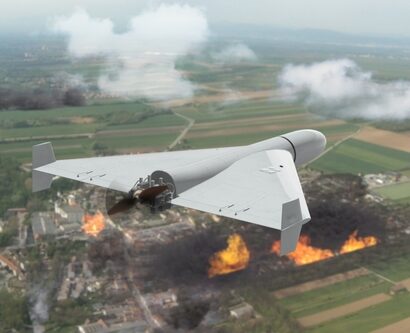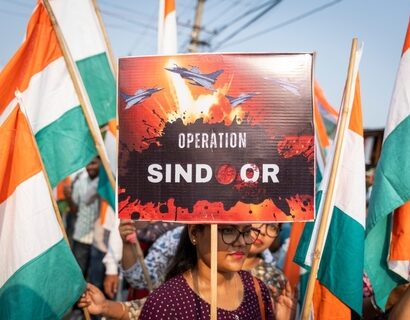Abstract: Since Russia initiated military actions in Ukraine, the Ukrainian President, Volodymyr Zelensky, has made frequent requests for Western countries to help arm Ukraine. Recently, the focus has been on the much-awaited F-16 fighters, whose transfer the US government approved in mid-2023. Many European states have pledged their fighters to Ukraine, with some states putting conditions on the aid. Introducing F-16s will be an interesting addition to the war; however, due to delayed delivery, the use of older model fighters, and the conditions attached to the aid will make F-16s unlikely to be a war winner.
Problem statement: Will the delivery of F-16s achieve the results desired of breaking mutual air denial since the start of this conflict?
So what?: The delivery and training of pilots are plagued with problems and do not allow F-16s to be used to their full potential. The realistic capabilities of F-16s need to be realised, and the problems faced by the Ukrainian Air Force need to be understood. As a result, F-16s will not be detrimental on the battlefield in a broader spectrum.
Source: shutterstock.com/Ali _CobanogluBreaking Mutual Air Denial
Following US approval in mid-2023, European states such as Belgium, Denmark, Norway, and the Netherlands started pledging F-16s to Ukraine. However, Ukraine is unlikely to draw the maximum potential from these aircraft. Regarding the Ukrainian Air Force, its pilots are trained on Soviet aircraft such as Soviet-made Su-24s, Su-25s and MiG-27s, none of which have fly-by-wire capability. Therefore, their training on Soviet jets does not directly translate to the fly-by-wire system used in F-16s. It will take years before the Ukrainian Air Force is able to execute combat missions effectively. Ukraine and Russia are on mutual air denial, where both states do not utilise their aerial capabilities on the disputed lines. The F-16 will unlikely prove beneficial in this regard for Ukraine as similar air defences are deployed on the Russian side.
Ukraine and Russia are on mutual air denial, where both states do not utilise their aerial capabilities on the disputed lines.
F-16s have been Ukraine’s top priority, as President Zelensky considers the aircraft key to further air defence against Russia. However, pledging and delivery are two different stories. Similarly, conditional aid amidst the war does not help the Ukrainian cause. The delivery of F-16s and training of pilots on such short notice is plagued with problems for Ukraine.
Committing Military Equipment Is Not Equal to Delivery
To understand the challenges facing Ukraine’s military efforts, considering the limitations and delays in receiving Western military support and equipment, specifically the F-16 fighter jets, is essential. Firstly, in an interview with Politico, the unnamed senior military commander in Kyiv said F-16s are “no longer relevant” to the conflict. This is because Ukraine’s military faced delays in receiving fighters, which are yet to be provided, along with differences in training in Europe and the U.S. As the Ukrainian Defence Minister reported, Western military support failed to arrive on time, and half of the Western military equipment promised to Ukraine arrived late.
Secondly, Belgian F-16s are conditional. They are not to be used over the territory of Russia. So, Ukraine may be forced to pick and choose which fighter to deploy during crises. Furthermore, the initial fighters provided to Ukraine were too few to make any strategic difference in winning the war. The Netherlands has pledged to provide 24 units, along with 22 from Norway, 19 from Denmark, 30 from Belgium, and 32 from Greece. Similarly, conditions on the military equipment do not help the case as well.
Another point to note is that Ukraine is facing problems with pilot training for the F-16s. Western states cannot train a large number of Ukrainian pilots at a time. Ukrainian officials say that the current training programme is not producing enough aviators to be mission-ready. The U.S. says that its Arizona-based programmes can accept no more than a dozen pilots at a time. The European states face a similar problem as Denmark has taken eight pilots, Romania has yet to take any pilots for training, and France has undertaken 10 Ukrainian pilots for training. This, combined with the delayed training of Ukrainian pilots in Europe, has heightened Ukraine’s frustration, as their pilots will not be ready until late 2024. Another point to note is that simulation training differs from combat sorties. In this regard, Ukrainian pilots have little combat experience, so they have to spend months training to be combat-ready for the F-16 as opposed to Russian pilots who have extensive experience in the Middle East. Conversely, Russia flew over 5,200 sorties in Syria. However, this experience may not directly translate to the conflict in Ukraine, where they face a capable Ukrainian air force and robust air defences, unlike the minimal opposition in Syria. Nevertheless, it should not be assumed that Russia lacks combat experience.
Will F-16s Make A Difference?
The F-16 has an impressive fighting record; the U.S. forces extensively used it in Iraq from 1991 to 2003 and in other states like Pakistan and Türkiye. They use advanced short-range air-to-air missiles (AAM) like AIM-9 Sidewinder to medium-range (AAM) like AIM-7 Sparrow and many air-to-surface missiles. However, these aircraft are now old and against militarily superior Russia. For example, the RuAF Su-35 is equipped with R-77 BVR missiles which outranges the F-16s BVR (Beyond Visual Range). The Su-35 has longer-range radars (N035 Irbis-E) with a range of 400 km, which helps it detect targets faster than the F-16, which uses AN/APG-66(V)2 radars with a range of 110 km in Mid-Life Update (MLU) models. Although both the F-16 and Su-35 use fire-and-forget missiles, the Su-35 outperforms the F-16 in range. However, range alone would not be a decisive factor, as fighters also face challenges such as air defence detection and the need to minimise Radar Cross Section (RCS) to avoid being locked on by enemy fighter/air defence. Comparatively, the Su-35, which is twice the size of the F-16, has a larger RCS, making it easier to lock onto. Moreover, the Russian S-400 is a major threat to all Ukrainian fighters. In areas where S-400 systems are deployed near the front lines, F-16s will need to fly low to avoid detection. This low-altitude flight will reduce the range of their missiles due to increased aerodynamic drag, rendering the AIM-120 less effective against Russia. F-16s, although superior to the existing Ukrainian fleet, do not possess stealth technology; however, their RCS is smaller, which would make detection harder for S-400, but still, deployment of F-16s near the frontlines or within range of S-400 would be problematic for Ukraine due to fear of interception. There is no doubt the introduction of the F-16 will increase Ukrainian capability; however, with the widespread presence of Russian anti-air, it is unlikely that the F-16 will play any decisive role in the war.
The Su-35 has longer-range radars with a range of 400 km, which helps it detect targets faster than the F-16, which uses AN/APG-66(V)2 radars with a range of 110 km in Mid-Life Update (MLU) models.
Another point to note is that even though Ukraine has been at war since 2014, its pilots lack combat experience. Ukrainian pilots are new to U.S. aerial technology, making it challenging to effectively utilise this machine. Training and simulations can help so much. Similarly, Russia processes similarly capable planes to F-16 and are combat-tested pilots. Fighters like MIG-29, Su-30, and Su-35 are fourth-generation and similarly (and sometimes more) capable fighters in the procession of Russia as opposed to F-16s pledged to Ukraine, which are Cold War era MLU models. Su-35 is “supermanoeuvrable” and has superior BVR capabilities than F-16s. In modern warfare, the manoeuvrability of aircraft is less important than factors like radar range, missile range, and a smaller RCS. How Ukraine and Russia aim to utilise their respective aircraft will matter. Conversely, Ukrainian pilots were not previously trained on Western military equipment, especially with sophisticated military hardware like the F-16s. So, operating U.S.-made aircraft may be problematic for Ukrainians.
For the Russians, F-16s might increase their threat perception, and for that, they could increase the intensity of the conflict. According to Ukrainian officials, Russia ramped up its attacks to gain more territory before the arrival and operationalisation of F-16s. Russia has reportedly achieved “local air superiority” over major fighting areas. For example, in Kharkiv, Russia has deployed air defence systems which can detect and destroy Ukrainian jets. Similarly, in Avdiivka, Russia temporarily established limited and localised air superiority and used glide bombs before the eventual Ukrainian withdrawal. If Russia perceives that the F-16 threatens their localised air superiority, it could increase the number of attacks. It could open new fronts to deny F-16 operations.
The West’s Conditions
The introduction of F-16s will be an interesting addition to the war; however, they will unlikely make a strategic difference for the Russians, who have yet to use their complete aerial capabilities against Ukraine, as it views the conflict as a limited war that does not require the full extent of its air power. Kyiv’s new defensive and offensive weapons will undoubtedly increase their capability. Still, Russia already perceives the increased Ukrainian capability and the introduction of F-16s as a ‘nuclear’ threat and the eventual F-16 introduction will intensify the Russian response.
The introduction of F-16s will be an interesting addition to the war; however, they will unlikely make a strategic difference.
Furthermore, imposing conditions by Western states will prevent Ukraine from fully realising the machine’s potential. Ukraine had to pick and choose which weapon to use during its offensive strike against Russia. So, F-16s will unlikely change any major dynamic or be the ultimate weapon to change the outcome of this war.
Shamil Abdullah Saleh is a Research Assistant at the Strategic Vision Institute, an Islamabad-based think tank with six major research areas: Strategic Stability, Nuclear Strategy, Arms Control and Disarmament, Developments in Outer Space, Peaceful Uses of Nuclear Technology, and Regional and International Peace, Security, and Stability. The views contained in this article are the author’s alone.





